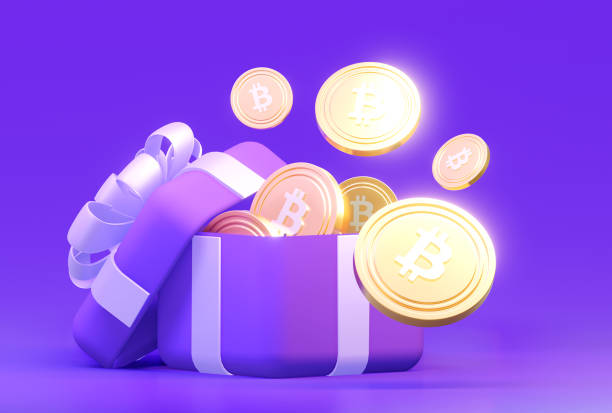Crypto airdrops, which involve the distribution of free cryptoassets have continued to gain popularity and high interest in the crypto industry. That is because the initiative provides several benefits and opportunities, including a cost-effective marketing approach for emerging crypto projects and free money for crypto enthusiasts.
Notably, the first instance of a crypto airdrop was recorded in 2010 when selected members of the Bitcointalk forum received 5 BTC each for their engagement in the Bitcoin community.
Another early crypto airdrop campaign occurred in March 2014. Here, the developers’ of ‘Auroracoin’ distributed 50% of the cryptoasset’s total supply to Icelanders. These show crypto airdrops are not new and are unlikely to fade anytime soon.
Factually, crypto airdrops will continue to exist as new blockchain projects emerge. Given this, you should be eager to learn what crypto airdrops entail and how they work.
What are crypto airdrops?
The term ‘airdrop’ is derived from the idea of “dropping” tokens into the wallets of existing cryptocurrency holders. Crypto airdrops can occur for various reasons, such as a new blockchain launch, a token swap, hardfork or reward for holding a specific cryptocurrency.
Simply put, crypto airdrops refer to the distribution of cryptoassets to the wallets of selected users free of charge. They are initiatives that allow crypto market participants to earn cryptoassets without buying them. However, certain conditions must satisfied to receive crypto airdrops, such as completing a task or holding another cryptocurrency.
Moreover, airdrops are among the marketing strategies used by some emerging blockchain projects to distribute free cryptoassets to a specific or targeted group of users. The distribution helps to increase project awareness, bootstrap the user base, and encourage community participation.
While some airdropped cryptoassets usually amount to little or nothing, some often turn out very profitable. Notably, the most valuable crypto airdrop in history occurred in January 2016. At the time, Minereum airdropped 32,000 MNE tokens to each of its eligible early adopters. Astonishingly, these airdropped tokens later amounted to $440,000.
In addition, crypto airdrops are of different types, including retroactive, holder, classic, bounty, community and fork airdrops. Each airdrop type differs in eligibility criteria, structure, distribution patterns, etc.
How do crypto airdrops work?
Below are the various steps required for a successful crypto airdrop campaign:
- Decision to Execute Airdrop: This is usually the first step in crypto airdrops. Here, a project team reveals the intention to distribute a certain amount of its native tokens for free to community members or users.
- Criteria for Eligibility Setup: To be eligible for any airdrop, crypto users usually need to meet specific criteria, such as holding a minimum amount of a particular cryptocurrency, being active in a community, having a required level of interaction with a certain DeFi platform or fulfilling other requirements set by the project team.
- Snapshot: Depending on the nature of the airdrop, a project’s team takes a snapshot to capture eligible wallets. For the uninitiated, a snapshot shows a record of activities of a blockchain network at a specific block height or for a selected duration.
Typically, only wallets with needed account activity or holding the specified cryptocurrency at the time of snapshot are always eligible for crypto airdrops. Notably, snapshots are always taken for retroactive, holder and fork airdrops. Whereas for standard or bounty crypto airdrops, eligible users are usually required to submit their wallets.
- Verification: Because of sybil attacks or airdrop farmers, projects often screen all wallets based on defined criteria to eliminate foul players seeking to receive airdrop tokens on multiple accounts. This could involve checking IP addresses and wallet activities for irregularities.
- Airdrop Allocation: After verification, tokens are allocated to all eligible wallets or users accordingly. The allocation may be proportional to the amount of the base cryptocurrency held at snapshot time or based on other predetermined factors, including volume and number of transactions.
- Airdrop Distribution: This is the final stage of every crypto airdrop. It involves the transfer of allocated airdrop tokens to all eligible wallets. In retroactive airdrops, users need to connect their wallets to the official airdrop website to claim their tokens. But in holder, fork, bounty or classic airdrops, tokens are transferred directly to eligible wallets.
Read Also: What is crypto trading? 4 Types You Can Engage in to Make Money
Why Crypto Airdrops?
The distribution of a cryptoasset’s supply can have a significant impact on its growth and success. When a large portion of the token’s supply is concentrated in the hands of a few holders, it can lead to various challenges and potential drawbacks. Hence, some projects use airdrops to distribute their native tokens fairly, allowing a broader audience to access and hold their supply.
Crypto airdrops can also help build and engage a community around a blockchain project. By distributing free cryptoassets, projects can attract users who might become long-term supporters. Likewise, projects use airdrops to reward their early adopters.
Ultimately, crypto airdrops serve as a marketing tool to create buzz and increase awareness about a project. By introducing airdrop campaigns, emerging projects can get the attention of the broader crypto community, attracting potential investors.
Final thoughts
There is no question that crypto airdrops have been effective for emerging blockchain projects in establishing their presence, rewarding loyal community members, and improving the distribution of their native tokens. The concept has equally provided a means for crypto enthusiasts to acquire free assets. Amid these numerous benefits, airdrop campaigns must be engaged with caution, as bad actors also use this strategy for various crypto scams.





